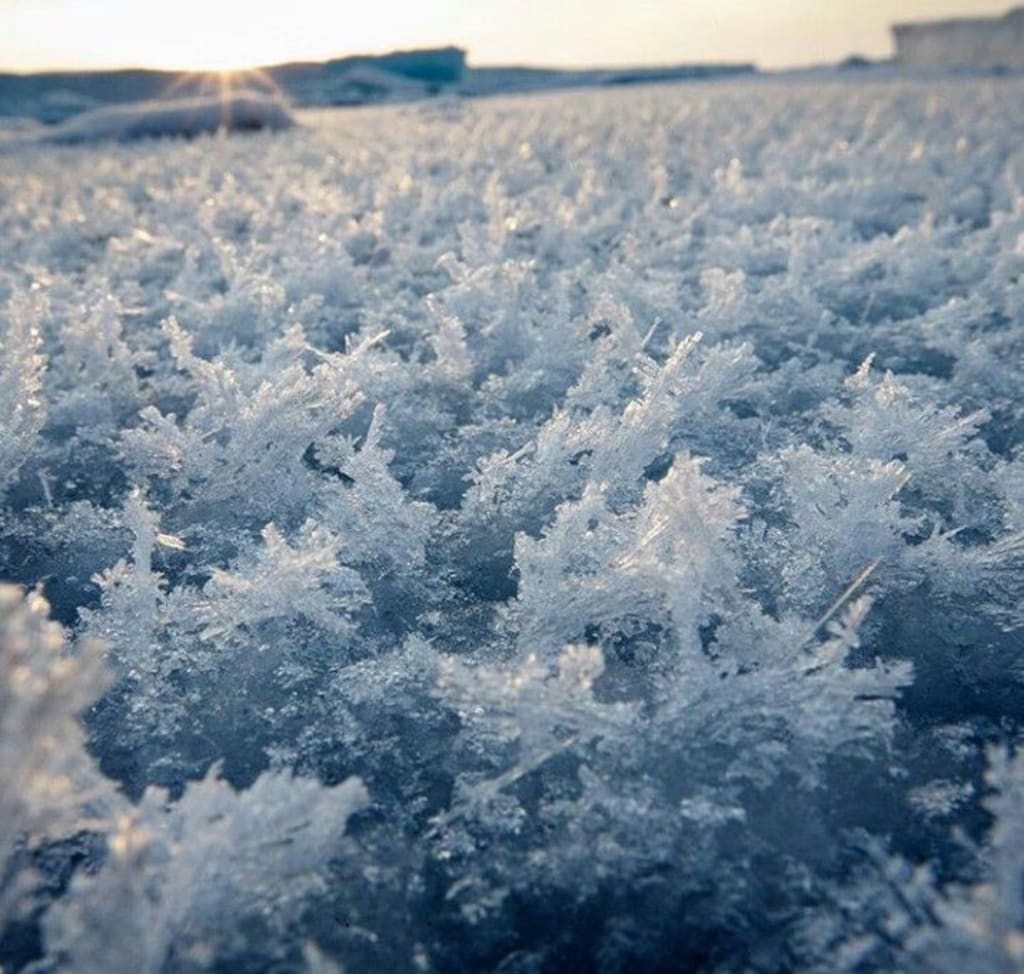The Rare Phenomenon of Frost Flowers: Discovering Nature's Ephemeral Beauty
A Delicate Dance of Ice and Air in the Winter Landscape

On a peaceful, chilly winter morning, when the air is still and wet (as water vapor), ice crystals form, resulting in a unique and beautiful natural phenomena known as frost flowers. A transitory and delicate (but real) beauty that will captivate the eyes of those who are fortunate enough to witness it.
What are Frost Flowers?
Frost flowers (also known as "hair ice" or "ice flowers") are extremely tiny and lacy ice crystals that grow under very specific meteorological conditions. They often grow on the stems and branches of dead plants or on damp soil, emerging when the temperature falls below freezing while moisture still emanates from the ground. This permits water vapor to escape up and into the chilly air, where it freezes instantaneously, generating ice strands that resemble flower petals.
How Do Frost Flowers Form?
Frost flowers are extremely fragile and require highly particular environmental conditions to thrive. First, the temperature must be low enough to freeze water but not so low that water vapor cannot rise from the ground. Also, the soil or plant on which it is developing must be saturated with water. As water vapor escapes from openings in the stems or bark, it enters the cold air and rapidly freezes into incredibly thin and fragile ice crystals.
Where Can Frost Flowers be Found?
Frost flowers are uncommon, and the meteorological conditions required for their growth make them difficult to anticipate. They are most commonly spotted in temperate North American and European woodlands, when humidity is strong and temperatures fall below freezing at night. The best time to see them is early in the morning, before the sun begins to melt these delicate forms by warming the air.
Why are Frost Flowers Important?
Frost flowers play a role, in research by helping us understand the fundamental principles of nature particularly related to water and temperature. These fragile ice formations develop under conditions serving as a laboratory for studying how temperature, moisture and atmospheric pressure interact.
By observing frost flowers scientists can uncover insights into phase changes the behavior of water and the patterns of ice crystal growth. Additionally frost flowers offer clues about weather conditions. Their presence or absence along with their size and structure can indicate variations in temperature and air moisture levels in an area. This makes them valuable tools for deciphering microclimates and tracking shifts over time.
Beyond their importance frost flowers are an enchanting natural phenomenon that reminds us of the transient nature and delicacy of all things created by nature. Their fleeting beauty lasts until sunrise or a change in temperature occurs emphasizing how temporary many natural occurrences are.
This impermanence serves as a reminder of the balance within our ecosystems and the consequences of environmental transformations. The intricate and delicate structures of frost flowers underscore how sensitive natural processes are to changes, in conditions.
If we're lucky to witness them these frost flowers will offer us a glimpse into an one of a kind form of artwork shaped by the unseen forces of winter.
In a world in which many of the pretty things that we once used to enjoy from Mother Nature are now under the danger of extinction due to climate change, the enchanting frost flower is a clear reminder of the destructiveness of climate and the shortness of beauty in the natural world. Many natural disasters such as storms, floods, draughts and illnesses caused by increased temperatures, pollution and destruction of habitats disturb the balance of the climate thus eradicating many natural events that people have grown up witnessing.
Frost flower with its fragile appearance typical of the phenomena that originate in freezing temperature shows just how fragile and fleeting these natural wonders are. Different climate changes really affect the occurrence of frost flowers since the conditions necessary to create these frost flowers may become less frequently as temperatures go higher and weather patterns change. This would hint at the extinction not only of a gorgeous and rare spectacle of nature, but also scientific values that are the further results of the works of these occurrences on the atmosphere and environment.
About the Creator
Enjoyed the story? Support the Creator.
Subscribe for free to receive all their stories in your feed. You could also pledge your support or give them a one-off tip, letting them know you appreciate their work.
Reader insights
Outstanding
Excellent work. Looking forward to reading more!
Top insights
Easy to read and follow
Well-structured & engaging content
Excellent storytelling
Original narrative & well developed characters
On-point and relevant
Writing reflected the title & theme






Comments (2)
Great pictures and an interesting article
This is really an interesting curiosity !